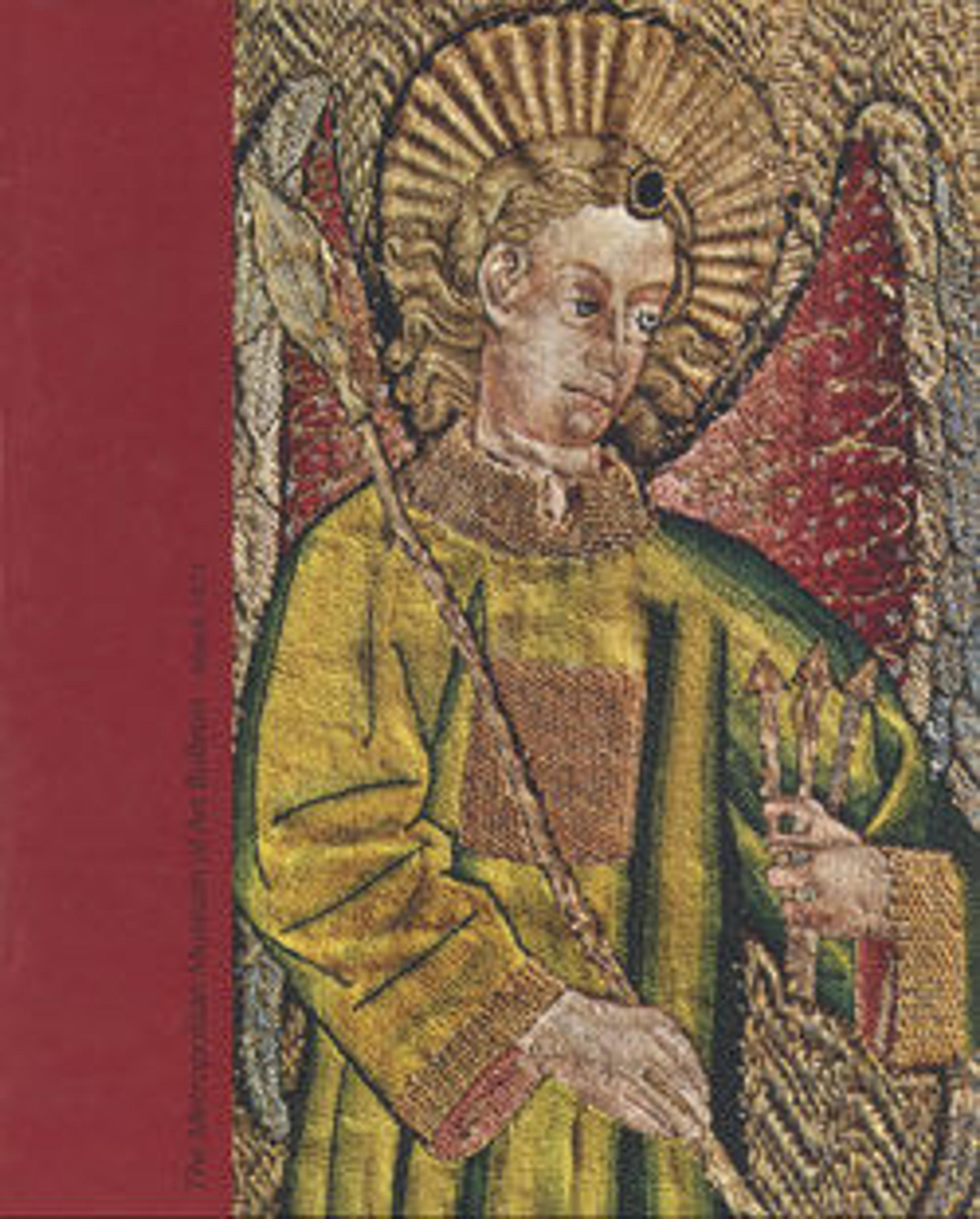Furniture plaque carved in relief with a falcon-headed figure
Carved in high relief, this rectangular, framed plaque depicts a falcon-headed figure in profile raising one arm with an open palm and holding the long, curving stalk of a voluted palmette flower in the hand of its other, lowered arm. It was found in a storeroom at Fort Shalmaneser, a royal building at Nimrud that was probably used to store tribute and booty collected by the Assyrians while on military campaign. Like two other plaques found in the same room, this piece is inscribed in the raised square of the upper left corner with Egyptian hieroglyphs that read "She who is beautiful." Iconographic elements drawn from Egyptian art including the solar disc crown, wesekh broad collar, and a pleated and fringed, long-sleeved shawl and shendyt (cloth kilt), frequently appear on Phoenician style ivories such as this piece. In Egyptian art, the motif of a falcon-headed figure crowned by a solar disc represents Harakhty, an aspect of Egyptian sky god Horus associated with the rising sun. The West Semitic letter Heth is inscribed into the upper edge of the ivory. Known as a fitter’s mark, it would have served as a guide to aid the craftsperson in the piece-by-piece assembly of the piece of furniture to which this plaque originally belonged. An adhesive probably aided the attachment of the ivory to a wooden furniture frame. The reverse has been roughened, probably to help the glue join the surface of the plaque to the frame.
Built by the Assyrian king Ashurnasirpal II, the palaces and storerooms of Nimrud housed thousands of pieces of carved ivory. Most of the ivories served as furniture inlays or small precious objects such as boxes. While some of them were carved in the same style as the large Assyrian reliefs lining the walls of the Northwest Palace, the majority of the ivories display images and styles related to the arts of North Syria and the Phoenician city-states. Phoenician style ivories are distinguished by their use of imagery related to Egyptian art, such as sphinxes and figures wearing pharaonic crowns, and the use of elaborate carving techniques such as openwork and colored glass inlay. North Syrian style ivories tend to depict stockier figures in more dynamic compositions, carved as solid plaques with fewer added decorative elements. However, some pieces do not fit easily into any of these three styles. Most of the ivories were probably collected by the Assyrian kings as tribute from vassal states, and as booty from conquered enemies, while some may have been manufactured in workshops at Nimrud. The ivory tusks that provided the raw material for these objects were almost certainly from African elephants, imported from lands south of Egypt, although elephants did inhabit several river valleys in Syria until they were hunted to extinction by the end of the eighth century B.C.
Built by the Assyrian king Ashurnasirpal II, the palaces and storerooms of Nimrud housed thousands of pieces of carved ivory. Most of the ivories served as furniture inlays or small precious objects such as boxes. While some of them were carved in the same style as the large Assyrian reliefs lining the walls of the Northwest Palace, the majority of the ivories display images and styles related to the arts of North Syria and the Phoenician city-states. Phoenician style ivories are distinguished by their use of imagery related to Egyptian art, such as sphinxes and figures wearing pharaonic crowns, and the use of elaborate carving techniques such as openwork and colored glass inlay. North Syrian style ivories tend to depict stockier figures in more dynamic compositions, carved as solid plaques with fewer added decorative elements. However, some pieces do not fit easily into any of these three styles. Most of the ivories were probably collected by the Assyrian kings as tribute from vassal states, and as booty from conquered enemies, while some may have been manufactured in workshops at Nimrud. The ivory tusks that provided the raw material for these objects were almost certainly from African elephants, imported from lands south of Egypt, although elephants did inhabit several river valleys in Syria until they were hunted to extinction by the end of the eighth century B.C.
Artwork Details
- Title:Furniture plaque carved in relief with a falcon-headed figure
- Period:Neo-Assyrian
- Date:ca. 9th–8th century BCE
- Geography:Mesopotamia, Nimrud (ancient Kalhu)
- Culture:Assyrian
- Medium:Ivory
- Dimensions:3.9 x 2.01 x 1.73 in. (9.91 x 5.11 x 4.39 cm)
- Credit Line:Rogers Fund, 1964
- Object Number:64.37.11
- Curatorial Department: Ancient West Asian Art
More Artwork
Research Resources
The Met provides unparalleled resources for research and welcomes an international community of students and scholars. The Met's Open Access API is where creators and researchers can connect to the The Met collection. Open Access data and public domain images are available for unrestricted commercial and noncommercial use without permission or fee.
To request images under copyright and other restrictions, please use this Image Request form.
Feedback
We continue to research and examine historical and cultural context for objects in The Met collection. If you have comments or questions about this object record, please contact us using the form below. The Museum looks forward to receiving your comments.
